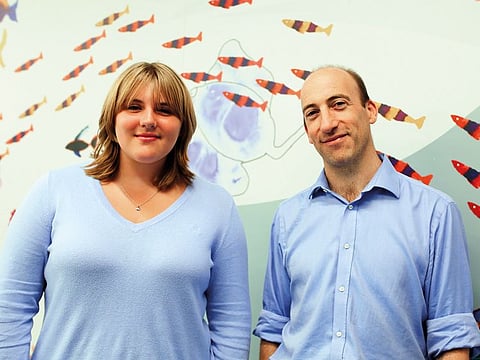New treatment to stop seizures sparks hope ahead of Purple Day
UK surgeon’s minimally invasive technique to benefit epilepsy patients

Dubai: As the world marks Purple Day on March 26, a pioneering technique called Laser Thermal Ablation which is capable of stopping reoccurrence of seizures has helped infuse fresh hope among patients.
Purple Day is an international grass roots effort dedicated to increasing awareness about epilepsy, one of the most common chronic neurological disorders that results in recurring seizures in an individual. According to the Epilepsy Foundation, over 65 million people suffer from this debilitating condition, with one in 200 children being affected.
Speaking to Gulf News, Dr Martin Tisdall, Consultant Paediatric Neurosurgeon from the Great Ormond Street Hospital (GOSH), London, who presented his new technique on a visit to Dubai, said, “Laser ablation is a technique designed to destroy abnormal brain tissue in an extremely targeted manner, whilst causing minimal damage to surrounding healthy tissues. It is a method for treatment of epilepsy-causing or malignant lesions in deep and difficult-to-access areas of the brain.”
Using a state-of the-art laser, abnormal tissue is destroyed with heat — directly targeted at the lesion. Real time imaging, provided by the new intra-operative MRI at GOSH, allows the surgeon to see the lesion caused by the laser as it is occurring and thus protect surrounding healthy tissue as the surgeon is able to turn off the laser when the MRI demonstrates that the correct lesion size has been made.
Dr Tisdall added: “Due to the minimally invasive nature of this procedure, patients can be discharged after a one-night stay. This is opposed to the 10 to 14-night stay currently required for patients who have traditional open surgery for similar conditions.”
The treatment introduced at GOSH is available to international patients as well.
Can laser ablation cure epilepsy?
Dr Tisdall said: “Carried out successfully, laser ablation aims to treat the cause of epilepsy in a patient, thereby stopping seizures. However, each individual case is different and needs unique management and follow-up care. For some patients, laser ablation will not be necessary as existing form of treatment may be more suitable.”
Meanwhile, a recent study of hypothalamic hamartoma treated with laser ablation has shown that 93 per cent of patients were free of gelastic (laughing) seizures at 12 months post treatment.”
Chiara Falls: seizure-free since surgery
Chiara Falls, 16, came to the Children’s Epilepsy Surgery Service at GOSH with her family to be treated for a brain tumour in the left hemisphere of her brain that triggered seizures.
“Chiara was investigated with video EEG telemetry and after a review with the epilepsy team, we felt that the best chance of curing her seizures was to surgically resect her tumour. Considering Chiara is a keen musician and sportswomen, the proximity of the tumour to the motor right leg and foot area of the brain made the surgery high risk,” explained Dr Tisdall.
During Chiara’s surgery, Dr Tisdall used several technologies to reduce the risks to her motor functions.
Claire Falls, Chiara’s mother, said: “Chiara had a craniotomy and successful 7.5-hour operation to remove a brain tumour. She went straight back to full-time school after five weeks and picked up her many sport and music activities, resuming her thirst for life again. Chiara’s been seizure-free since the surgery.”
What is Purple Day?
Purple Day is an international grass-roots effort dedicated to increasing awareness about epilepsy, one of the most common chronic neurological disorders that results in recurring seizures in an individual. On March 26, people worldwide are invited to wear purple and host events in support of epilepsy awareness.
Sign up for the Daily Briefing
Get the latest news and updates straight to your inbox



